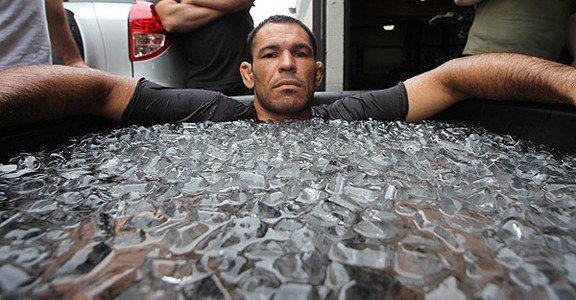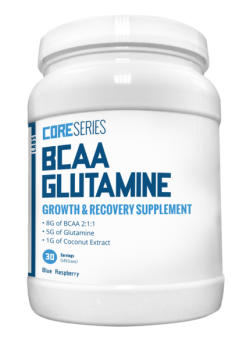Athletes have always been looking for ways to recover faster after a hard workout.
There are many different methods of doing so, with each having their own side effects and benefits. One method is the use of ice baths.
The purpose of this article is to explore the effectiveness of using ice baths in order to help athletes recover from workouts more quickly.

What is an Ice Bath?
An ice bath is a method of recovery used by athletes after an intense workout to reduce inflammation, vasoconstriction, and tissue breakdown, which are normal parts of the exercise recovery process. Ice baths usually consist of 10-20 minutes in a bath cold enough that you cannot have a conversation due to the chattering of your teeth.
Ice baths decrease muscle soreness and can be used preventatively before an intense workout. They also increase blood flow, which brings more oxygen and nutrients to the muscles to help them repair themselves faster. Ice baths have been shown to decrease cortisol levels (which causes stress on the body) and other factors that contribute to inflammation, such as prostaglandin, the enzyme associated with pain, tenderness, and swelling.
Ice baths can also decrease leukocyte count (white blood cell) and increase lymphocyte (another type of white blood cell). Ice baths reduce the double bond prostaglandin production, which is associated with the high-temperature present during exercise, which can contribute to muscle damage.

What is Contrast Therapy?
Contrast bath therapy is a physical therapy treatment in which all or part of the body is immersed first in hot water, then iced cold. This alternating process is repeated several times. The contrast baths can help improve circulation around your injured tissue by targeting specific areas with different temperatures that will increase blood flow for healing purposes.
This is one of many whirlpool treatments physical therapists use to help decrease pain, muscle spasms and improve strength. It can also increase range-of-motion in the body’s joints while improving functional mobility.
Do Ice Baths Actually Reduce Inflammation?: The Research.
Ice baths sound great, but what does the research say? Do they even work?
This meta-analysis review, done at the University of Poitiers in France found that ice baths effectively reduce inflammation. However, the review found that massage was most effective for inflammation reduction. The review’s conclusion stated that “Water immersion and the use of compression garments also have a significant positive impact on these variables but with a less pronounced effect.”
So, you might want to book a massage or get a good massage gun to go with your ice baths for amplified effect.
Ice Baths and Muscle Gains: The Research
If you are looking to build muscle you might want to limit your ice baths to a minimum.
This study conducted by the University of Queensland and others found that ” The key findings were that cold water immersion substantially attenuated (reduced) long-term gains in muscle mass and strength, and delayed and/or suppressed the activity of satellite cells and kinases in the mTOR pathway during recovery from strength exercise.”
In their conclusion they wrote:
“The results of these studies challenge the notion that cold water immersion improves recovery after exercise. Individuals who use strength training to improve athletic performance, recover from injury or maintain their health should therefore reconsider whether to use cold water immersion as an adjuvant to their training.
Bottom line:
If you are looking to build muscle and strength I would use ice baths sparingly.
How Long Should You Sit in an Ice Bath?
Typically, for Ice Baths, the most effective time frame is 10-20 minutes. After this amount of time, your body starts to divert blood flow from your extremities (where it pools due to inactivity) back towards the core of your body and away from the Ice Bath. This means you won’t get as much of a benefit.
Related: Foam Rolling for Athletes: The Benefits and Types of Foam Rollers
Will Ice Baths Improve Athletic Performance?
Ice baths alone won’t turn you into an all-star athlete, but they can provide some benefits like reduced inflammation, circulation, and relaxation.
If you are an endurance athlete it may be worth it to try an ice bath.
Alternatives to Ice Baths
- Massages
- Foam Rolling
- Stretching
- Low intensity work/cool down
- Warm bath
- Rest
Ice Baths: The Attention Factor
Let’s be honest, in today’s world, people are more attention-starved than ever. If people can do something that garners attention many people will do it.
Posting yourself in an ice bath is great social media material. Whether it really has many benefits is secondary to all the precious likes and comments it can garner.
Also, submerging your entire body into frigid waters can make some people feel like a badass, like they are mentally superior because they can tolerate the numbing chill.
Massages and foam rolling just aren’t as attention-grabbing although they have more benefits.
Does everyone do it for attention? Of course not. Do a lot of people? I’m sure they do even though they won’t admit it.
View this post on Instagram
Conclusion
So, are ice baths worth the bother? If you are an endurance athlete, you may benefit from reduced inflammation, but a good massage has been proven to be more effective.
If you are a strength athlete, it has been shown that ice baths can actually be detrimental, and you should most definitely limit your number of ice baths or use an alternative.

Ryan is a former college wrestler and lifelong fitness fanatic with over 25 years in the industry. He’s run half marathons, tackled mud runs, placed in body transformation contests, and coached everything from wrestling to girls’ soccer.
Along the way, he’s tested hundreds of supplements and built a deep well of supplement knowledge. His work has appeared in Muscle & Strength, Testosterone Junkie, The Sport Review, and more. Today, he’s the editor-in-chief of this site, still training hard and helping others reach their goals. Connect with him on LinkedIn below.








